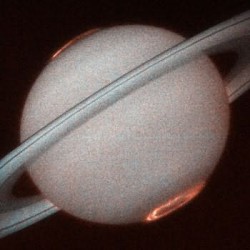 |
| Mars Opportunity Rover |


As the gif demonstrates, Chemin performs X-ray diffraction measurements. It fires thin beams of X-rays through powdered material gathered by Curiosity. Some of the X-rays get absorbed by the atoms in the sample and then re-emitted at energies that are specifically characteristic of the particular atoms present in the sample. X-rays can also bounce away at a certain angle that corresponds to the internal crystalline structure of the sample. Measuring this angle which which the X-rays are diffracted into the detector can identify the minerals.
The image above is the X-ray diffraction results produced by Chemin which is sent back to Earth. The diffraction signals are the rings that represent the fingerprint of the minerals. The rings provides information on both what minerals are present as well as how abundant they are.
And Chemin is only one piece of equipment on the Curiosity Rover. There are also cameras, radiation detectors, environmental sensors, and atmospheric sensors. Weighing one ton, more than any other rover made, the Curiosity Rover truly deserves the name Mars Science Laboratory.















